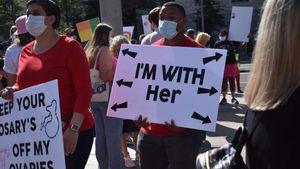Acclimating to outside society can be thorny issue for ex-inmates on their first day out — especially people living with HIV who rely on continuous HIV care — but a new program is devoted to improve existing post-release intervention programs.
The new UCLA-led program is described and analyzed in a study published in JAMA Internal Medicine. Dr. William Cunningham, MD, MPH is professor of medicine in the division of general internal medicine and health services research at the David Geffen School of Medicine at UCLA and the study’s principal investigator.
Cunningham hopes to improve the rocky transitionary period in which released HIV positive ex-inmates frequently face frightening interruptions in their HIV care, or the loss of guidance through assistance programs.
“The LINK LA study was conducted at L.A. County Jail, the largest jail system in the US,” Cunningham explained to HIV Plus Magazine. “L.A. County Dept. of Health Services and the Department of Public Health together are working hard to incorporate the lessons from this project to improve support for post-release HIV care. There are no national studies of all the many jails around the country to know what they are doing, but we are collaborating with or aware of several, somewhat similar interventions tested in studies like ours (in the S.F. Bay Area, Atlanta, NYC, to name a few) but no others have shown that they can actually achieve the improvement in viral load that we showed in LINK LA.”
The suppression of viral load makes all the difference—undetectable levels of the virus helps to significantly drop the likelihood of the transmission of the disease. The rate of HIV among people incarcerated in American jails is three to five times higher than in the rest of the population, according to the Centers for Disease Control and Prevention. In jail, people living with HIV (usually) have complete access to healthcare, which includes the antiretroviral therapy that keeps their viral loads lower or undetectable.
Researchers recruited 356 HIV-positive men and transgender women from Los Angeles County Jail. One hundred and eighty of those men and women were randomly assigned to the LINK LA peer navigation treatment arm. Researchers say that 176 received transitional case management only, consisting only of needs assessments and referrals to housing assistance and doctor’s appointments. Forty-two percent of the study’s participants were black and 31 percent were Latino.
Researchers learned that 49 percent of the participants assigned to the LINK LA peer navigation arm successfully maintained their viral suppression for 12 months after being released from jail. Comparatively, the proportion of those assigned to the existing program who maintained their viral suppression was only 30 percent at the end of the period, down from 52 percent.
Researchers say the LINK LA peer navigation improved other treatment outcomes such as HIV primary care visits, adherence knowledge, visits to mental health care and case management, and reduced emergency department visits among ex-inmates over 12 months. The team admits some limitations limited control, such as some information partially collected by jail staff or self-reported by prisoners.
Cunningham says that he hopes that large municipal jails around the country will learn from what his team has done and test the intervention in their systems and/or implement programs based on his model to improve post-release care for people living with HIV. “Because each year approximately 1/7th of the entire HIV-positive population cycles through criminal justice settings, (mostly jails large municipal jails) this intervention has the potential to have an enormous impact on the epidemic,” Cunningham said. “Not only did the LINK LA intervention sustain viral suppression relative to controls over 12 months, it also improved linkage to care, retention in care, mental health care, and case-management visits and it reduced emergency department visits. Together these effects can have profound impacts, not only for the individuals getting the care but their partners and the public health at large.”
This study was supported by the National Institute of Health, National Institute on Drug Abuse and the Center for HIV Identification, Prevention, and Treatment with funding from several organizations. It’s ironic that in jail, sometimes access to HIV care is easier than the transitionary period following when an incarcerated person is set free. The LINK LA intervention program could help change that for people living in Los Angeles County.



































































